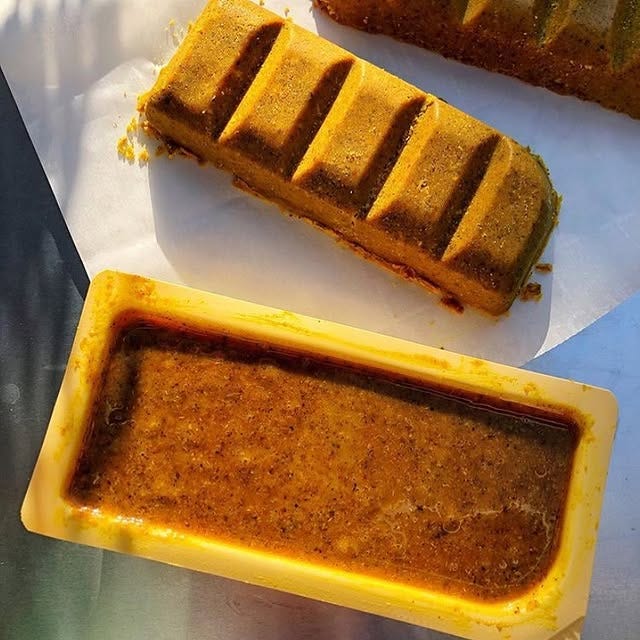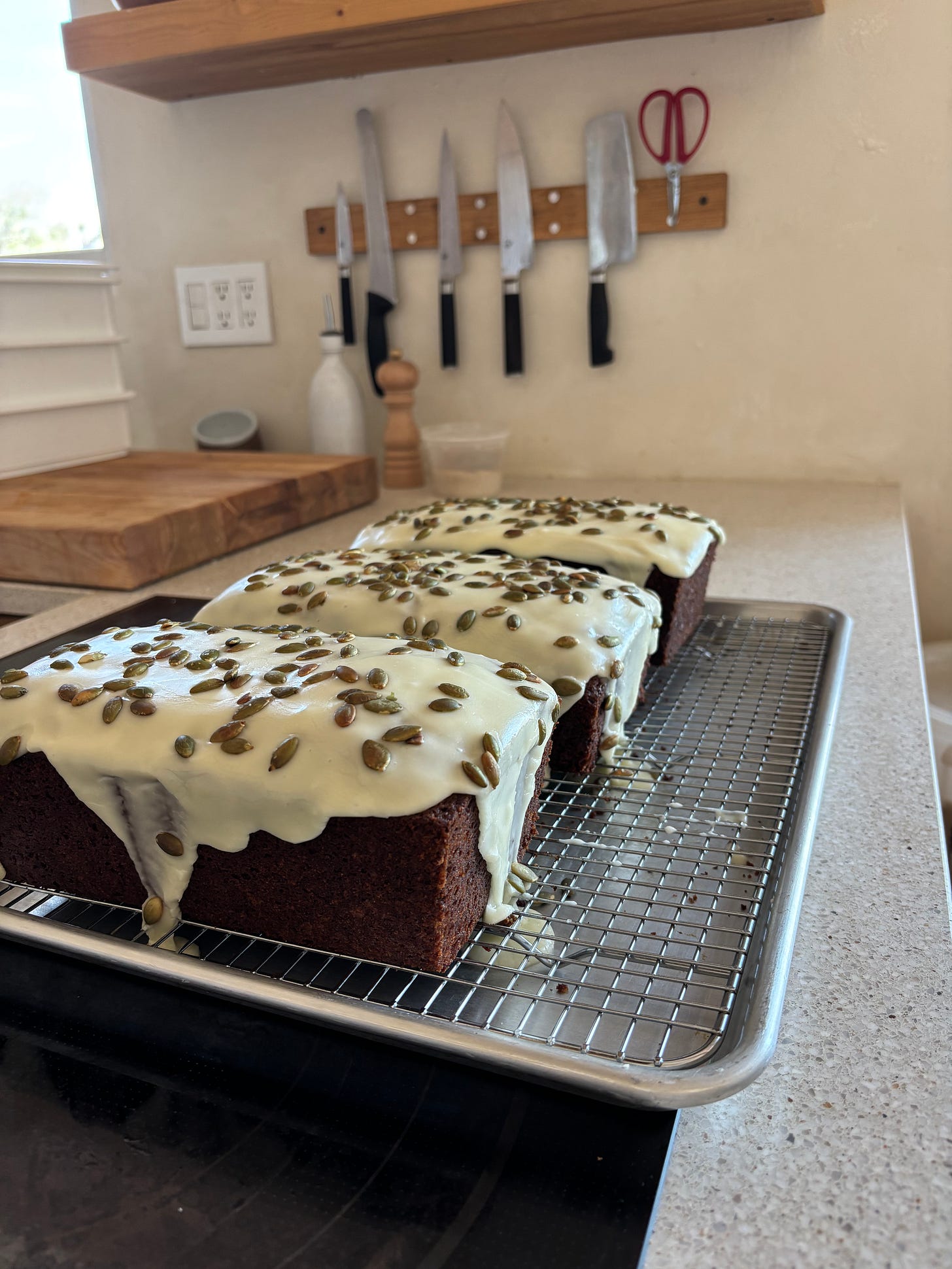This newsletter is part of a regular series, Nook of Delights, in which I share the things currently giving me joy, giving me life.
Well hello there!
Popping in on this BEAUTIFUL Fall day with not one, but two!, things that have my cup absolutely runneth-ing over.
Curry!
Sonoko Sakai’s Curry Simmer Sauce recipe from her latest book, Wafu Cooking has been on heavy rotation this week, and it’s this genius mention of hers, at the end of the recipe, that I can’t stop thinking about. If you’ve made something similarly stewy before, you may have shared in this experience of dipping your tasting spoon in at cooktime’s end, and being so close but not quite sticking the landing. Sakai has you tweak not just with salt and soy, but with both a dash of rice vinegar and a tiny dab of honey! The vinegar lifts the curry, while the honey works, kind of like how you would imagine salt does— giving shape to the umami that got lost amidst the fatty/salty sauce.
While taking the time to make the simmer sauce does yield a noticeably better curry, her Curry Roux Bricks are a great way to getcurryintomouth even faster.
Japanese Curry
Adapted slightly from Sonoko Sakai’s Wafu Cooking
Serves 4
Finely mince 1 yellow onion (lately, I’ve been enjoying making thin radial cuts along the onion halves, then cross-cutting the other way. It feels neater/cleaner than the “traditional” method, and expresses the curvature of the onion nicely, but do what you gotta do.
In a 3-qt Dutch oven, heat 1/4 cup ghee (or butter, sesame oil, or neutral oil) over medium heat. Add the minced onion and cook, stirring occasionally, until softened and just starting to caramelize.
While the onion is going, mince 2 cloves of garlic and a thumb-sized piece of ginger. You may be tempted to grate both on the Microplane, but I highly recommend taking the time to, at least, finely chop the ginger. With each spoonful, you’ll get these tiny crunchy pops of ginger, which really nicely lift the curry.
Slide those to the side of your cutting board, and roughly chop 1 ripe tomato, and add it to a small bowl. (Alternatively, use a hefty squirt of ketchup, about 2 tablespoons.) Also to the bowl, add 2 tablespoons sake, 1/2 teaspoon salt, 1 tablespoon soy (I’ve used everything from a dark soy to a white soy to a yuzu ponzu here—anything really goes, each shifting the profile slightly), 1/2 teaspoon chili powder (something with heat, I used a Kashmiri Chili powder), and a few cracks of black pepper. Set aside.
When the onions look nearly ready, about 10 minutes, add the ginger and garlic to the pot, stirring until fragrant. Sprinkle into the pot 3 tablespoons flour (Sakai calls for either Mochiko or AP), and stir to coat the aromatics well. Cook until the raw flour taste/smell is gone, and the mix looks blonde, about 3 minutes. Stir in 1 tablespoon curry powder, again mixing well to coat. (To make your own, follow her curry brick recipe up to Step 3 (before making the roux), or buy the pre-made stuff!)
Add the contents of the small bowl, stirring to mix well with the aromatics, making sure to scrape up the bottom of the pot. Add 4 cups of broth (a really luscious, gelatinous bone broth is GREAT here), bring to a boil, and simmer for 10-15 minutes, or until the roux has thickened the broth. The curry sauce should be thick enough to coat a spoon, but not your *final* desired thickness, as we’re going to use this to cook the meat and veg.
While the sauce is simmering, cut 1 1/2 lbs of meat (something relatively quick-cooking, like chicken breast or thighs; if you want to use a stew meat, like I did with the ox tongue, pre-blast it in the IP for 40-60 minutes on High), and enough sturdier-cooking veg (onions, potatoes, root veg) to make up about 4 cups. I like rangiri-cut for this—it gives Cooking Mama cozy.
In a wok or large skillet, heat 3 tablespoons sesame oil (I love what the layering of fats—sesame and ghee—does here, but if you want to keep it all one fat, do you!) over medium-high heat, and sauté the chopped meat and veg until softened, about 10 minutes.
Tip your meat and veg into the pot with your simmer sauce. Stir very well to coat (make sure there’s no sauce sticking to the bottom of the pot!), and simmer gently for 15-30 minutes, or until your veg is tender.
Finally! The moment we’ve all been waiting for! Taste the sauce. Add 1 teaspoon rice vinegar and 1/2 teaspoon honey Though it’s a tiny amount of sweetener, it is noticeable, and can be a fun opportunity to add your own spin. (I used a citron marmalade—IYKYK—which teased out more of the floral notes of the ginger) Taste again. Adjust with salt or more soy sauce, and rice vinegar and honey, if needed. Serve with short-grain white rice.
Kabocha, Olive Oil & Chocolate Cake
Pls forgive, I know this Nook is getting long, but I must mention this cake that, alone, marks the arrival of Fall for me like nothing other. It is a cake that is so good it might be evil. It is a cake that Trevor and I have absolute zero chill around. It is….Nicole Rucker’s Kabocha, Olive Oil & Chocolate Cake, introduced to me by my pal, Kristen!
Honestly… I have no words that would do it justice. Just make the damn cake.
xx C





